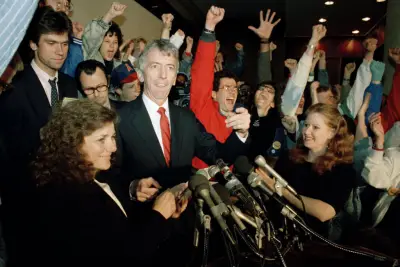37 years later, Gallaudet’s ‘Deaf President Now’ protest immortalized in new documentary

.in-article-vertical-video {float: right; padding-left: 10px;width:300px !important;}@media only screen and (max-width: 767px) {.in-article-vertical-video {float: none; padding-left: 20px;}}.in-article-vertical-video connatix_video_caption {width: 300px !important;}#tnvbNcaMHUrl {margin-bottom: 10px;padding: 20px 10px;background: #D30000;text-align: center;font-weight: bold;color: #fff;border-radius: 5px;}.connatix_video_caption{margin-bottom: 30px; margin-top:0; font-size: 14px; color: #272828; font-weight: 600; text-align: left; display:none;} This page contains a video which is being blocked by your ad blocker.In order to view the video you must disable your ad blocker.(new Image()).src = "https://capi.connatix.com/tr/si?token=9be9c680-c459-4acb-af21-654a2ccca384&cid=c2ffed0c-3624-46c0-b10f-97c976d290a3";cnx.cmd.push(function() {cnx({playerId: "7bc491b4-922b-4e8d-b1b1-150648e80442", mediaId: "44fcda0f-ef0a-40b2-a88d-208f440bf776"}).render("9e644587cbd84d4ba007f6ed72e777a9", function(renderError, playerApi) {if(!renderError && playerApi && typeof playerApi.getSize === "function") {var size = playerApi.getSize();var captionElements = document.querySelectorAll(".connatix_video_caption");var captionElementsArray = [...captionElements];captionElementsArray.forEach(el => {if(el && size) {el.style.width = size.width + "px";el.style.display = "block";}});}});});Gallaudet’s ‘Deaf Presidents Now’ protest immortalized in new documentary In March 1988, students at Gallaudet University in D.C., the world’s only liberal arts university for the Deaf and hard of hearing, sparked a civil rights movement that changed history. After the university’s board selected a hearing woman, Elisabeth Zinser, as president — despite two qualified deaf candidates being finalists — students, faculty, alumni and staff erupted in protest. They demanded that Gallaudet be led by someone who truly represented its community: a deaf president. “I was shocked,” recalled student leader Jerry Covell in an interview with WTOP. “I really did not expect them to do something that stupid. We were taught to communicate what the students would like to see to the board, and this was their response? We were asking for the first deaf president, and they (were) like, ‘Oh, the first woman president in history. They were trying to make it sound so wonderful that it was the first woman, and it did not fit the bill.” Now, 37 years later, the movement is being memorialized in a new documentary, “Deaf President Now,” co-directed by Gallaudet alum Nyle DiMarco and Oscar-winner Davis Guggenheim (“An Inconvenient Truth”). The film, which premiered at Sundance and is streaming on Apple TV, currently holds a 100% score on Rotten Tomatoes. The movement that followed — the Deaf President Now (DPN) movement — shut down the Northeast D.C. campus for eight days. Students issued four demands: (1) appoint a deaf president, (2) resignation of the board chair Jane Spilman, (3) establish a 51% deaf majority on the board, and (4) guarantee no reprisals against student protesters. Bridgetta Bourne-Firl, the only woman among the four core student leaders now known as the “DPN4,” said the experience forced her to reconcile her passion for gender equity with the urgent need to center Deaf identity. “I consider myself a feminist,” said Bourne-Firl. “(But) when I saw Deaf women in support of the DPN movement, it made me reframe my thinking. Asking for a Deaf president? It had never happened before. If the Board knew Deaf history at all, they would have reacted differently. They were paternalistic — they wanted to ‘help’ Deaf people.” The protests became a watershed moment in disability rights. Zinser ultimately resigned, and Gallaudet appointed Dr. I. King Jordan, a deaf man, as its eighth — and first Deaf — president. “The documentary is so important,” said Greg Hlibok, who served as student body president in 1988. “Young people today don’t always realize the access they have wasn’t just given — it was fought for. DPN led directly to the ADA. It changed lives.” Despite being depicted in the documentary as the “quiet” one of the group, Hlibok said the film oversimplifies his role: “It was about a team effort, and everybody within that team has a different personality. (But) every Hollywood film likes to see a contrast, and that’s the way it was portrayed.” Tim Rarus, another student leader, said they were intentional in keeping their demands focused. “This was all new to us,” he said. “We felt it was important to keep the message simple. And we realized that without support from faculty and staff we might not have achieved as much as we did. Also (having support) from the hearing community, we felt, was also important.” A Legacy Rooted in Family and Community One unifying thread among the DPN 4 is that each of them came from Deaf families, giving them a foundational sense of identity and purpose from a young age. “My parents were both deaf,” said Hlibok. “And when you’re born deaf, you automatically become an advocate for yourself for the rest of your life. I was born in the ’70s (when) there weren’t many resources to support Deaf people. We had 19 Deaf clubs around New York (where) we were constantly exchanging information with one another, supporting one anther, and we started advocating for access. My parents were involved in a protest (when) CBS wanted to force Deaf people to buy a separate, distinct product to see captions on certain channels. That was the first protest that I was part of, and that stuck with me.” Bourne-Firl echoed that sentiment: “All four of us have a legacy of coming from Deaf families. We also were raised in the Deaf school environment, where we had Deaf adults around us who empowered us, who got us involved in efforts of activism. We were involved in Junior NAD (National Association for the deaf) leadership camps for youth (where) we received a lot of formal and informal training in leadership.” “We have Deaf parents and grandparents who are our ancestors, who truly hold the legacy,” she continued. “They are our role models who stood behind us and made us who we are.” Rarus shared a piece of advice passed down from his mother. “My mom always said to me, ‘Being Deaf is a full-time job.’ I didn’t realize what she meant at first, but over the years I realized how much we have to educate, how much we have to advocate, and how much of a task that is in and of itself.” Covell agreed. “It is better (for us) than it was for our parents. And it was better for our parents than it was for our grandparents. So it has gotten better … and I think DPN, and really the movie as well, gives a lot of Deaf people (and) other disabled people the feeling of, ‘Oh, we can do this. We can make systemic or institutional change.'” The Work That Remains All four activists agree: DPN was just the beginning. The Americans with Disabilities Act was signed into law in 1990. Captioning improved. Interest in ASL and Deaf culture has grown. But major gaps remain. “We have made great strides since then, except in one area that we’re still stubbornly behind in, which is employment,” Hlibok said. “Seventy percent of individuals who are disabled are either unemployed or underemployed. People are wanting to show up to work, to be members of society, but are not given the space to participate.” Bourne-Firl hopes the documentary sparks global awareness — not just of what Deaf people can do, but what they deserve from the start. “What’s so very critical is that (Deaf children) have access to language early. Deaf people, Deaf children, still don’t have access to the critical component of communication that makes them able to thrive because of what doctors tell their parents,” she said. “It’s the system that prevents Deaf children from being who they can be — the system fails them. It’s not (simply) because they are Deaf.” And for Covell, the film is proof that history doesn’t have to fade. “What happened in 1988, people have already forgotten. But images stick with people, and that’s now what’s capturing us,” he said. “(People) see the movie and typically say things like, ‘I didn’t realize Deaf people did that.’ So for the public to get this film, it’s a positive.” Source

